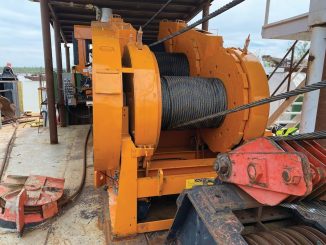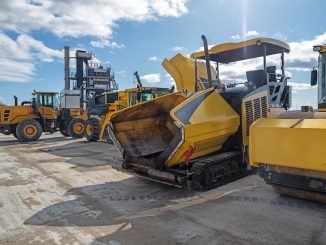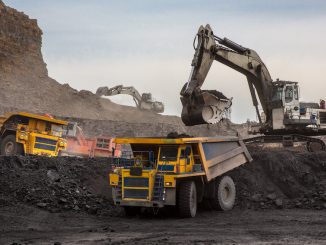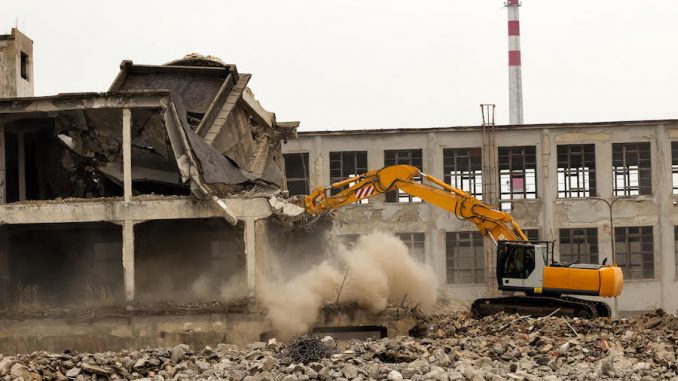
View the complete article here.
The demolition industry in the US accounted for $8bn in revenue during 2018 with more than half of contractors expecting work to increase during the coming year.
In addition, almost 50 percent of those surveyed believe there will be a rise in “green” style demolition as clients become more environmentally-friendly and contractors aim to reduce landfill costs.
As a result, the style of demolition is changing, meaning a dramatic rise in the usage of machine mounted attachments. This in turn has opened up a whole new debate on safety and guidelines. The range of attachments can include fixed and rotating, manual or hydraulically operated tools, with many having interchangeable jaws and multi-utility application
SAFETY
First, comes the issue of stability. An attachment will significantly alter the solidity of a machine and hydraulic pressures and counterweights may need to be altered to ensure optimum safety in operation.
High reach machines could topple due to overbalance, leading to potentially serious injury for anyone nearby. Lifting and lowering the boom could also cause a problem unless the machine is on firm and level ground.
In certain working environments, a trained and competent spotter may be required. It is also recommended that radio communication be used between the operator, site supervisor and spotter.
To avoid the risk of injury during a change of attachment or front-end equipment, it is recommended that changeovers involve a competent assistant and are conducted in strict accordance with the manufacturer’s instructions, ensuring that the original pins and pin retaining systems are located and secured with the manufacturer’s recommended locking devices.
The attachment, i.e. shear, pulverize, grab, etc. should never be used as a bludgeon to break or weaken a structure or to push or pull. Apart from damaging the attachment, the kinetic energy built up by the movement of the boom or dipper arm towards the structure, will increase with every inch travelled (Mass x Acceleration).
If the attachment strikes an object that does not give way, it will impact the attachment itself, boom, boom mountings and base, and may impose bending stresses in the cylinders and boom.
Most recorded accidents involving machine operation and maintenance are caused by failure to observe basic safety rules or precautions. An accident can often be avoided by recognizing potential hazardous situations beforehand.
If a procedure, tool, working method or operating technique not specifically recommended by the manufacturer is used, the operator must satisfy him/herself that it is safe. Everyone has a duty to pay attention to what hazards there might be and how best to avoid them.
OPERATORS OBLIGATIONS
Operators must always refer to the manufactures specification regarding the safe working load (SWL) of the machine. When carrying and using a demolition attachment it is recommended that the tool be positioned in line with the tracks and over the front idlers (drive sprockets to the rear) for maximum stability, allowing the machine to be reversed quickly and safely in the event that falling debris may strike the machine.
All controls should be operated in a smooth, steady manner to avoid any sharp or sudden movements that might affect the stability of the machine. Operators should ensure that they do not operate the attachment in line with the boom as loose debris may roll down the boom and onto the cab of the machine. Good practice will dictate that the operator should be able to see the jaws of the attachment and to accomplish this; the attachment should be angled downwards when cutting or shearing.
The correct personal protection equipment (PPE) is important when changing an attachment, coupling or uncoupling hydraulic hoses, topping up fuels and oils and carrying out routine maintenance. Operators should always keep windows and doors closed during attachment use, particularly when shearing and breaking to avoid injury from flying debris. If glazed units become damaged or scratched they should be replaced.
Ensuring a safe distance between the machine/attachment and nearby workers is a must, and the operator should communicate his proposed actions to the supervisor or spotter.
It is also important that processes are observed daily. Operators should carry out a walk around the intended work area to check on ground conditions and stability.
The attachment and the machine should also be inspected for damage or wear prior to operating and any concerns raised for immediate action.
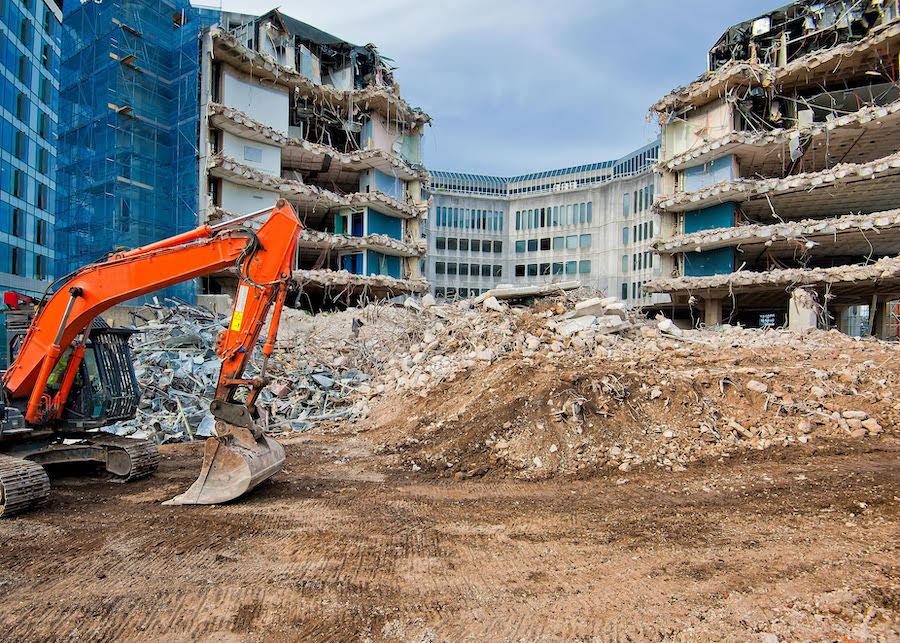
OPERATOR NO-NOS
Operators should never allow the working attachment to become entangled in debris that could lead to an overload or loss of stability. The operator must be aware at all times of the SWL of the machine, the weight of the attachment and the approximate weight of any material being lifted or moved.
If an operator is unsure about the weight or proper connections being in place then it is advised to seek advice before operation. During servicing a machine must be labeled with a ‘do not operate’ tag.
If a hydraulic leak is noticed the machine should be shut down as serious injury could occur from contact with hot oil under pressure as well as contamination to surrounding soils etc. All work should be halted until concerns are effectively dealt with.
No attempts should be made to modify an attachment for better performance. Operators must not use an attachment to carry out lifting duties (some quick hitches expected). When there is a requirement to lift and/or carry the attachment to or from the machine, only the manufacturers recommended lifting points must be used.
Finally, if visibility is poor or the area is obstructed then work should be halted.
As you can see, the use of attachments for demolition purposes bring their own unique set of difficulties. It is important to remind workers of the precautions and measures required to ensure a safe and successful project. If you’re hungry for more information about the process and other tools used in demolition, check out the Science of Demolishing a Building.
Bio: Jim Arabia is Vice President of Marketing at BigRentz, the nation’s largest rental network for construction equipment.
View the complete article here.
What safety measures should be considered when working with attachments in demolition?
Safety measures include ensuring machine stability, using trained spotters, employing proper communication, avoiding misuse of attachments, and following manufacturer's instructions during changeovers.
What obligations do operators have when using demolition attachments, and what are the key safety practices?
Operators must adhere to manufacturer specifications, maintain machine stability, use appropriate personal protection equipment (PPE), avoid entanglements, follow weight limits, promptly address concerns, and cease operations in case of hydraulic leaks or poor visibility.






































